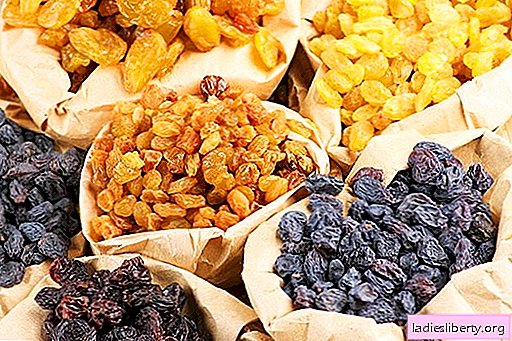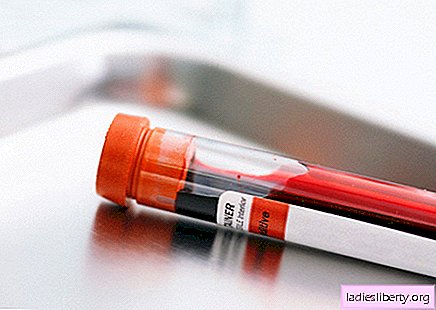
Cheburek is the name of a fried pastry and filling, of Crimean Tatar origin, which is common in Russia. A popular, quick and very satisfying snack has a lot of names: calzone (Italian), burekas or gözleme (Turkish and Hebrew), burek or burek (Serbian Armenian and other Balkan languages), empanade (Argentinean), lertsu ( Fin.), Hushuur (Mong.), Burekaki (Greek).
If you meet such pies, fried in a pan, from yeast-free dough, stuffed with meat, cheese and herbs, potatoes and mushrooms, seafood during the trip, try it. Well, for those who are not going to visit Argentina, Mongolia, Greece or Finland in the near future, the original recipes for the fillings for pasties are offered below as an alternative to a culinary trip.
Beer chebureks - basic technological principles
Chebureks, in fact - fried pies in oil, with any filling, from products that were available at the time of their preparation. They can be prepared in Russian, Finnish, Tatar - in any of the ways characteristic of one or another national or regional cuisine. This is a simple dish with a huge number of cooking options that are already known to the people of the planet, and cooking methods that are about to be discovered by famous cooks or inventive housewives.
It is difficult to establish where the recipe for making dough for beer came from, even impossible. But, presumably, there are two versions.
Beer contains brewer's yeast, malt (sprouted barley, rye, corn, rice), hops. Yeast forms alcohol as a result of fermentation. But, as you know, at temperatures above 40 ° C, most species die, and alcohol evaporates at high temperatures. Such a reaction helps to create a layered texture of the dough, almost without increasing its rise, unlike Russian yeast pies. Brewer's yeast at an alcohol concentration of 10% stops the development and reproduction. Most likely, the malt, which gives a peculiar taste to the dough, low alcohol-forming abilities of beer served as an idea for preparing a yeast-free dough on beer. This is the first version of the appearance of a recipe for making dough for pasties on beer.
As a product containing a small amount of yeast with a very low activity, beer can hardly be considered a component that affects the rise of the dough. Such a role is only possible for baker's yeast and special starter cultures.
Beer dough is even prepared for puff cakes: there are such cases. But, as you know, the layering of the test is achieved mainly due to the presence of fats in it and saturation with oxygen during the rolling of the layers. So, beer has nothing to do with it.
What then? Without the use of malt, which is part of the beer, it is impossible to bake delicious rye bread. Sprouted grains of barley give the dough a pleasant sweetish and peculiar shade of taste. Perhaps the addition of beer to the dough is due to this nuance? Someone tried to do so, shared his impression, and the recipe for a beer test "went to the people"? Then the following happened approximately: the popular drink in every kitchen can be found more often than malt, and the "modernized" recipe for pastry for pasties on beer has strengthened its position. Moreover, it is common for our mistresses, conducting an audit in the refrigerator, to put into business everything that came to hand. This development option looks quite plausible. Moreover, the second version technologically leads to the same result: beer in the test affects the taste, not particularly affecting the technological and biochemical features of its preparation.
Why do we need to find out these seemingly unnecessary details? Answer: if you want to give the dough just such a “beer” taste, add a spoonful of ready-made malt. By the way, recipes for rye dough products, including fried pies, so similar to chebureks, are known in the national cuisines of the northern peoples, and rye dough with the addition of malt is a unique taste and aroma. That’s all the wisdom about making a dough for beer, except for the main principle, which is known even to novice housewives: the yeast-free dough for pasties with or without beer should have a very dense consistency so that it can be rolled out like noodle dough .
You can talk about the fillings for pasties for a very long time, if you look into every corner of the world, its history. Therefore, the advice is only one, very simple: choose any ingredients, according to taste or mood. The ratio of the filling and the dough should be approximately the same, and the humidity of the cooked minced meat affects the quality of the prepared semi-finished product: too juicy minced meat for pasties will leak from the dough shell, and the products will fall apart in their hands in raw form, burn during frying due to juice flowing from the inside .
1. Chebureks on beer with lamb
Dough:
Flour 450 g
Salt 5 g
Beer 175 ml
Minced meat:
Lamb (non-greasy) 360 g (net)
Ground pepper 7 g
Onion 75 g (net)
Water 80 ml
Salt 6 g
Deep-frying oil 120 ml
Cooking Technology:
Knead the hot dough like noodles. Divide into pieces, weighing 60 g, roll thin cakes.
Prepare the minced meat and lay it in the center of each dough piece of 50 g. Roll the cakes in half, pressing the edges of the dough. Fry on both sides in boiling oil.
2. Chebureks on beer with spinach, cheese and minced meat
Ingredients:
Dough:
Beer, light 100 ml
Kefir (3.2%) 125 ml
Flour 550 g
Extra salt 10 g
Cooking Oil 0.4 L
Minced meat:
Minced meat (minced pork and beef) 220 g
Onion 100 g
Spinach (or Peking cabbage) 120 g
Feta cheese 150 g
Ground pepper
Order of preparation:
For minced meat, chop the vegetables finely, grate the cheese, combine the ingredients with chopped meat and season with spices.
Prepare the dough: combine kefir and beer in a bowl, salt. Add the sifted flour and knead a very cool dough. Then cover it with a towel and leave for an hour to ripen.
Divide the finished dough into pieces of 60-70 g, roll thin round cakes. Spread the minced meat in them, into half a circle, flatten, departing from the edge of the cakes by 0.5-0.7 cm, so that it is convenient to pinch the dough. Fold the blanks in half, connect the edges. Fry in boiling oil.
3. Chebureks on beer made from minced beef with garlic
Ingredients:
Dough (according to the recipe No. 1)
Minced meat:
Water (or broth) 80 ml
Salt 5 g
Garlic 20 g
Sour cream or yogurt, natural 50 ml
Parsley, chopped 40 g
Onion 80 g
Pepper 10 g
Beef 360 g (net)
Deep fat 0.5 L
Cooking method:
Peel the meat from the film, wash, chop finely with a knife. Add the chopped vegetables and herbs, chopped garlic, broth, spices and sour cream.
Roll the finished dough onto a working surface in a layer 2.5-3 mm thick, cut into squares with a side of 10 cm. Put 30 g of minced meat in the center of each square, fold the blanks with an envelope, then put the same amount of minced meat on top. Fold the envelopes in half and pinch the edges of the dough. Fry in boiling deep-frying.
4. Chebureks on beer - Finnish fish with fish
Products:
Salmon (or trout), lightly salted 300 g
Rice, boiled 120 g
Boiled eggs 2 pcs.
Dill, chopped 50 g
Cumin 15 g
Ground pepper, ground 10 g
For the test:
Flour 700 g
Margarine or spread 150 g
Baking powder 20 g
Sour cream 100 g
Beer 170 ml
Salt 8 g
Egg, raw (for lubrication)
Vegetable fat (for baking sheet) 180 g
Cooking Technology:
Combine the ingredients prepared for the minced meat. Knead dough: mix sour cream with beer; add salt to the flour, chop the cooked fat in it with a knife. Gather a slide on the table, center the recess and pour out the liquid. Knead, and then put it under a napkin, to ripen, put it in the cold, for about an hour. Then roll the layer, cut it into squares with a side of 9-10 cm, spread the stuffing over the entire surface of the workpieces, stepping back a little from the edge. Press the minced meat with your hand, moisten the edges of the cakes with water to better stick together. Roll the cakes diagonally, then put one more spoonful of minced meat on one half of the resulting triangle. Fold the triangles in half again. Press down again with your palm, lightly. Pinch the edges. Grease each triangle with a beaten egg on top. Such pasties can be baked in the oven at 220 ° C for 10-12 minutes. If you want to deep-fry, you do not need to grease the surface of pasties with an egg.
5. Chebureks on beer with smoked ham - ideas from Finnish cuisine
Products:
Dough - according to the recipe No. 4 750 g (per 100 pcs.)
Stuffing (60 g per 1 pc.):
Smoked ham 370 g
Parsley, chopped 80 g
Spicy mustard
Ground white pepper
Paprika
Salt
Cheese, semi-soft 100 g
Leek 150 g
Cooking Technology:
Finely chop the ingredients for the minced meat with a knife and combine into a common mass. Preparation of dough and semi-finished products from it is similar to the description in the previous recipe.
6. Chebureks on beer - kalzone with mozzarella, olives and tomatoes
Product Composition:
Beer 170 ml
Yeast, pressed 20 g
Flour 500 g
Salt to taste
Water 200 ml
For filling:
Tomatoes 150 g
Leek 70 g
Mozzarella 220 g
Chile 10 g
Garlic 20 g
Basil 50 g
Hard cheese 100 g
Thyme 40 g
Black olives 70 g
Cooking method:
Pizza dough in Italy is prepared on water and yeast, but in the Russian version it may contain beer, in small quantities. Combine warm beer and water with yeast, add a little flour to activate the yeast. After a few minutes, when bubbles appear, sprinkle the rest of the flour. Knead the dough, cover it and set in heat until the volume doubles.
From the ingredients for the filling, prepare the total mass, finely chopping and mixing all the components. Chebureks, kalzone, closed small pizza or, in Russian, fried pies with such a filling will have a characteristic taste of Mediterranean cuisine. Why not?
Further prepared semi-finished products, as for any pies. The ratio of filling and dough is 40:60. Small calzones are fried in a pan, in heated olive oil, for 3-4 minutes on each side, but you can bake them in the oven and serve hot, with one of the traditional Italian sauces.
Chebureks on beer - useful tips and tricks
The yeast-free dough, immediately after cooking, you need to cover with a napkin so that the crust does not form, and let it stand. During ripening, the gluten contained in the flour swells under the influence of the wet components of the dough, and it becomes more plastic. If the dough contains fats, then for ripening it is better to place it in the refrigerator, also covering the surface. Plastic dough products look more neat.
Yeast-free dough must also be kneading well, as well as yeast dough. During kneading, vegetable protein (gluten) forms strands that hold air bubbles between each other, which ensures splendor to the dough. During baking or frying, the air released from the dough further increases the volume of the product.
In order to ensure order in the kitchen and work table when cutting dough and making semi-finished products, use oil to lubricate the surface instead of flour. In addition, when frying pasties in deep fat, flour from the surface of semi-finished products crumbles into boiling fat, forms an unpleasant odor, smoke, as it settles to the bottom of the dishes and is difficult to remove before frying. Using oil for a working surface, undesirable moments can be avoided.











